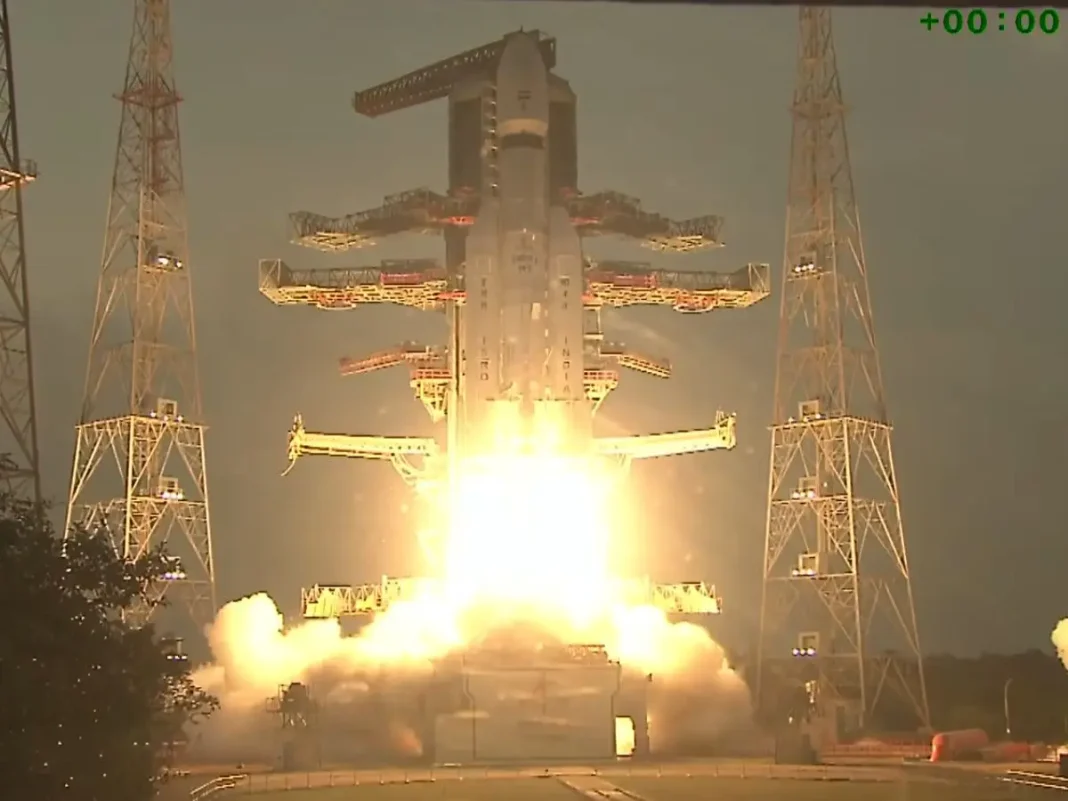Key Takeaways
- ISRO successfully launched India’s heaviest communication satellite CMS-03 aboard LVM3-M5 ‘Bahubali’ rocket
- The 4,400+ kg satellite will significantly boost Indian Navy’s maritime security and communications capabilities
- Mission featured breakthrough technologies including cryogenic engine reignition for multiple orbit deployments
India’s space agency ISRO achieved another milestone with the successful launch of CMS-03, the country’s heaviest communication satellite to date. The LVM3-M5 rocket, nicknamed ‘Bahubali’, lifted off from Sriharikota’s Satish Dhawan Space Station at 5:26 pm on Sunday, marking a significant advancement in India’s indigenous space capabilities.
“Liftoff! #LVM3M5 launches #CMS03 from SDSC SHAR, carrying India’s heaviest communication satellite to GTO,” ISRO wrote on X.
Adding an update in another post, it said, “LVM3-M5/CMS-03 Mission Update: CMS-03 separated successfully. Perfect injection.”
Mission Highlights and Technological Breakthroughs
This mission represents the fifth operational flight of the LVM3 vehicle, which was previously used in the Chandrayaan-3 launch. ISRO chief Dr V Narayanan confirmed the successful in-orbit testing of the indigenously developed C25 cryogenic stage.
“LVM3-M5 successfully injected into the required orbit precisely. This is the 8th consecutive successful launch by LVM3. CMS-03 is the heaviest satellite placed in GTO orbit. The vehicle performance was enhanced to increase its payload capacity by 10 per cent,” he said.
The mission featured several technological firsts, including the reignition of the C20 cryogenic engine after satellite separation – a capability that enables placing satellites in multiple orbits using the same launch vehicle.
He further added, “The satellite has a life of 15 years and carries a host of new technologies. We accomplished this mission despite the difficult weather conditions. The launch also had the reignition of the C20 cryogenic engine for the first time after placing the satellite. This will help in placing satellites in multiple orbits using LVM3.”
Enhanced Naval Capabilities
CMS-03 is specifically designed to strengthen the Indian Navy’s space-based communications and maritime domain awareness. Weighing over 4,400 kg, the satellite incorporates indigenous state-of-the-art components tailored to meet naval operational requirements.
“This satellite is India’s heaviest communication satellite to date, weighing approximately more than 4,400 kg, and includes many indigenous state-of-the-art components developed specifically to meet the Indian Navy’s operational requirements,” the Indian Navy said.
National Recognition
Prime Minister Narendra Modi congratulated ISRO on the successful mission, acknowledging the space agency’s consistent achievements.
“Congratulations ISRO on the successful launch of India’s heaviest communication satellite, CMS-03. Powered by our space scientists, it is commendable how our space sector has become synonymous with excellence and innovation. Their successes have furthered national progress and empowered countless lives,” he said.
The successful CMS-03 launch demonstrates India’s growing prowess in space technology and marks another step toward self-reliant space capabilities.





